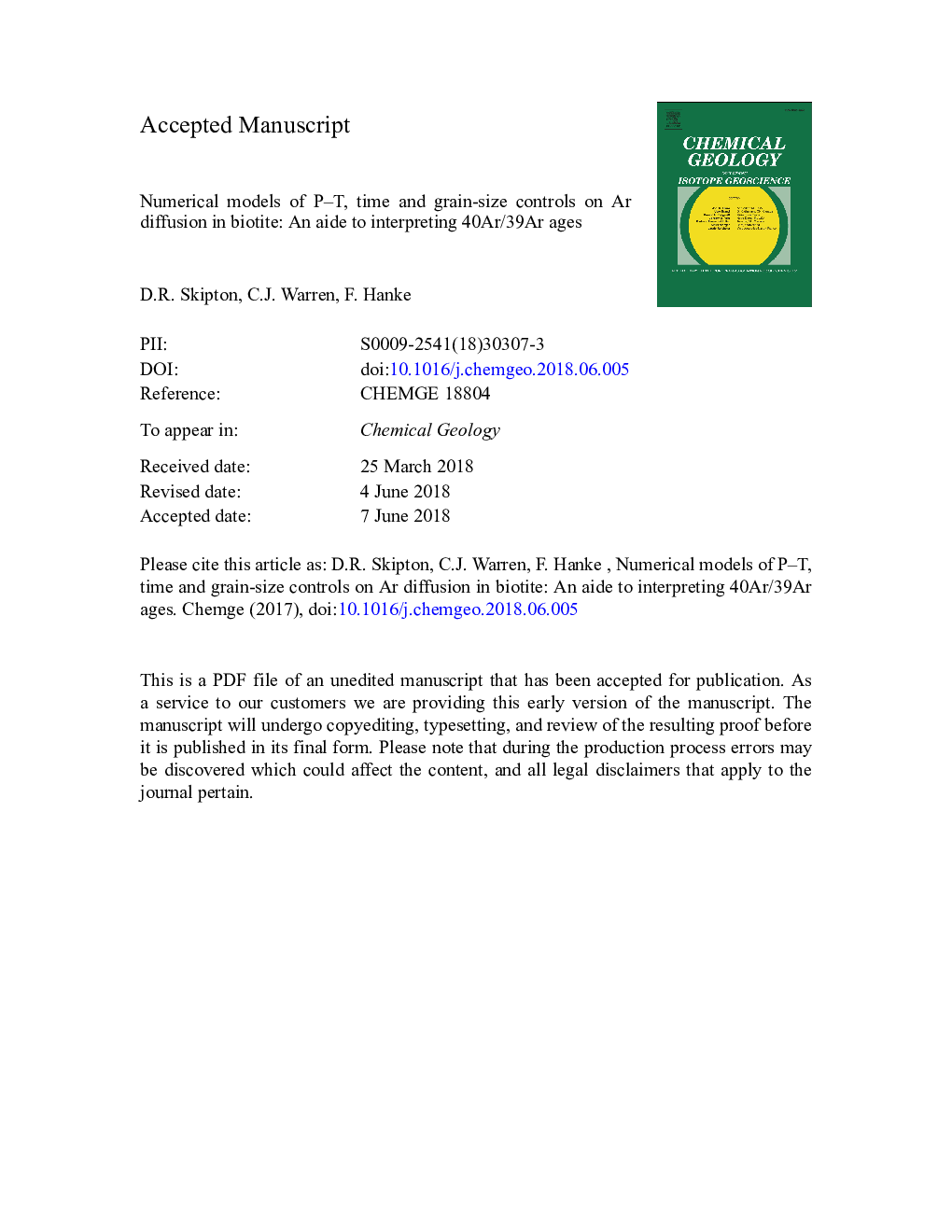| Article ID | Journal | Published Year | Pages | File Type |
|---|---|---|---|---|
| 10224339 | Chemical Geology | 2018 | 44 Pages |
Abstract
Dating of biotite using the 40Ar/39Ar method is used extensively to determine the timing of cooling and exhumation in metamorphic rocks. Interpretations of 40Ar/39Ar dates commonly assume that 40Ar diffuses out of biotite through temperature-dependent volume diffusion, and therefore that the date represents the time at which biotite cooled through a closure temperature. Several processes, however, may perturb Ar systematics such that the 40Ar/39Ar date does not uniquely represent the timing of cooling through a closure temperature, including incomplete re-setting of Ar systematics, incorporation of excess Ar, crystal defects acting as Ar traps or fast-pathways, or fluid-present recrystallization/dissolution. We present a series of numerical diffusion model results that show the percentage of radiogenic Ar that should theoretically be retained in biotite with different grain radii residing for various periods over a range of P-T conditions, in a perfect open system that loses Ar via volume diffusion alone. A second set of models demonstrates the effects of different cooling rates on biotite 40Ar/39Ar dates and intra-grain Ar distributions in a perfect open system. The model results are useful for constraining cooling and exhumation histories from 40Ar/39Ar biotite data in a variety of metamorphic settings. They also provide baseline data for biotite 40Ar retention, 40Ar/39Ar ages and intra-grain age distributions that would theoretically be produced from volume diffusion acting alone. Consequently, the models can help evaluate the plausibility of alternative scenarios that may have affected biotite 40Ar/39Ar dates, including extraneous Ar contamination or Ar loss via processes other than diffusion. In conjunction with well-constrained petrogenetic histories, numerical diffusion models are a powerful tool for interpreting 40Ar/39Ar biotite ages, especially when linked with intra-grain 40Ar/39Ar age profiles.
Related Topics
Physical Sciences and Engineering
Earth and Planetary Sciences
Geochemistry and Petrology
Authors
D.R. Skipton, C.J. Warren, F. Hanke,
